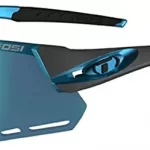Cycling sunglasses are an essential piece of gear for any mountain biker. Not only do they protect your eyes from debris, insects, and harmful UV rays, but they also improve visibility in bright conditions. However, quality cycling glasses often come with a high price tag. Thankfully, there are many affordable options that offer both style and protection without breaking the bank.
In this article, we’ll explore the benefits of cycling sunglasses, even cheap options, and provide tips for choosing the right pair on a budget. Protecting your eyesight should never be compromised, regardless of how much you want to spend.
Why Wear Cycling Sunglasses?
Many novice riders may wonder if sunglasses designed for cycling really make a difference compared to traditional shades. The clear answer is yes, cycling glasses provide critical advantages over regular sunglasses. Most significantly, they protect your eyes from wind, dust, insects, and debris that can pelt your eyes at high speeds on the trail. Their wrapped shape and adjustable nose pads block particles from all angles.
Additionally, cycling sunglasses reduce glare, allowing you to see the road or trail ahead clearly, especially on bright, sunny days. Their lenses often have more specialized tints like yellow or brown and polarization that filters light differently than regular shades. The improved vision can make a big difference in avoiding obstacles and hazards on fast downhill runs.
So while ordinary sunglasses might work in a pinch, quality cycling glasses like Tifosi Alliant are engineered specifically with the demands of mountain biking in mind. They account for the high speeds, debris, and variability of light conditions. While they may carry a higher price tag than traditional sunglasses, most riders find cycling-specific glasses well worth the investment over time.
Features to Look for in Affordable Cycling Sunglasses
You don’t have to spend a small fortune to get excellent eye protection and visibility on the trail. Many budget-friendly cycling sunglasses offer similar performance and durability as premium brands costing over $200. Here are some of the key features to look for:
- Impact Resistance – Look for polycarbonate or trivex plastic lenses that can withstand a serious impact. In an accident, weaker lenses could shatter and severely damage your eyes.
- 100% UV Protection – Ensure the glasses block 100% of UVA and UVB rays from all angles to protect your eyes from long-term damage.
- Polarized or Photochromic Lenses – These specialized lenses filter glare and adjust tint in changing light conditions for optimal trail visibility. Polarized lenses cut distracting glare while photochromic lenses automatically adjust from dark to light.
- Wraparound Shape – Curved lenses with wide coverage protect your peripheral vision from debris entering at sharp angles.
- Rubber Nose Pads – Cushioned, adjustable nose and temple pads prevent slippage over bumps and keep dust out.
- Ventilation – Strategic vents in the frame promote airflow to prevent fogging during intense climbing or descending.
- Interchangeable Lenses – Being able to swap lenses for different light conditions adds versatility for around $40-$60.
With the right combination of these features, even inexpensive cycling glasses under $50 can match premium brands costing 10x as much in protecting your eyes and improving trail visibility. You can enjoy years of high performance without paying top dollar.
Are Expensive Brands Worth the Cost?
With so many affordable options available, you may wonder – are pricier premium cycling sunglasses really worth the extra cost?
Well-known cycling brands like Oakley, Smith Optics, and Rudy Project often use proprietary high-end materials to achieve superior optics, unbeatable durability, and scratch resistance. For example, Oakley Prizm lenses boost color and detail to improve vision on the trail.
These premium sunglasses also have optimized ventilation and carefully contoured shapes for all-day comfort. While the improved performance comes at a steep price – often $200 and up, is it worth it?
The better optics and comfort are certainly nice if you ride trails frequently. However, many casual to intermediate cyclists can’t rationalize the huge added cost for occasional riding. Plus, losing or breaking expensive glasses on rocky terrain is painful.
For most riders, budget cycling sunglasses around $30-40 provide plenty of quality and performance for recreational use. Avoiding the brand name price premium allows you to get durable eye protection for a fraction of the cost. So unless you’re a competitive cyclist, inexpensive eyewear can still offer ample safety and style on the trail.
Finding the Right Fit
To get the full benefits of cycling sunglasses, finding the right fit for your face is essential. Ill-fitting glasses will be uncomfortable and prone to bouncing or slipping off over rough terrain. Here are some tips for making sure your new shades fit well on your next ride:
- Try on multiple sizes and frame shapes at the store to gauge overall fit. Glasses should feel snug but not tight. Measure your temple width if ordering online.
- Adjust nose pad position and angle so they firmly grip your nose bridge. This prevents sliding down from sweat or vibration.
- Make sure curved lenses fully shield your peripheral field of vision to protect from debris entering at sharp angles.
- Lighter frame materials like TR90 thermoplastic or Grilamid reduce pressure that causes headaches on long rides.
- Don’t forget to use strap connectors or Croakies to secure glasses and prevent losing them on rough descents.
Taking the time to find your optimum fit will maximize both the comfort and safety provided by your cycling eyewear. Don’t just settle for glasses that don’t feel secure during rides.
Keeping Lenses Clean
No matter how good the lenses are, accumulated dirt, smudges, and scratches will degrade visibility and optics over time. Follow these tips to keep your lenses clean for maximum clarity:
- Rinse lenses with water after each ride to wash off dust and grit that causes scratches.
- Use a small amount of mild soap and lukewarm water to remove stubborn oil and dirt. Avoid harsh chemicals that can damage lens coatings.
- Only use microfiber cloths designed for lenses to avoid scratches when wiping and drying.
- Store glasses in a protective hard case to prevent scuffs and damage.
- Never use tissues, paper towels, normal cloths, or your shirt to wipe and clean lenses.
- Read the manufacturer’s instructions for proper care of anti-reflective and photochromic lens coatings.
With consistent cleaning and storage habits, even inexpensive cycling sunglasses can maintain good optical clarity and longevity for years of mountain biking adventures.
Lens Tint Options
Most cycling sunglasses offer lens tints designed to enhance visibility in certain conditions:
- Mirrored or colored lenses like yellow, brown, or silver reduce glare and increase contrast in bright sunlight.
- Photochromic lenses automatically adjust darkening based on ambient light levels. Convenient for varying conditions.
- Clear lenses allow visibility in very low light and protect eyes from debris and wind. Popular for night mountain biking.
- Polarized lenses cut distracting glare from water and wet roads for clearer vision.
Having an assortment of lens tints and swapping as needed optimizes visibility across changing light conditions and times of day. Many affordable cycling glasses have interchangeable lenses to allow mixing and matching.
Lens Materials and Coatings
Lens material and protective coatings also affect performance:
- Polycarbonate lenses offer outstanding impact resistance to prevent injury in a crash. This shatter-resistant plastic is standard on most cycling sunglasses.
- Trivex plastic provides similar impact protection with improved optical clarity over polycarbonate alone. It’s lightweight and a good choice for smaller frames.
- Glass lenses offer the sharpest optics but are heavier and more prone to shattering. Usually only found on high-end sunglasses.
- Anti-reflective coatings reduce distracting glare and eye fatigue from sunlight hitting the lenses.
- Hydrophobic coatings cause water to bead up and scatter less light compared to uncoated lenses.
- Oleophobic coatings prevent oil and grease from fingerprints sticking to the lenses. Easier to keep clean.
- Scratch-resistant coatings protect lenses from getting scuffed and scraped by debris and brush.
While glass lenses and fancy coatings are reserved for premium brands, most affordable cycling sunglasses have durable impact-resistant plastic lenses. With proper care they remain optically clear for years.
Overcoming Fogging Issues
Few things are more annoying than sunglasses fogging up during intense rides or temperature swings. Luckily, several solutions combat lenses fogging:
- Vents allow airflow circulation to reduce fogging. Look for glasses with vents across the frame top and sides.
- Anti-fog lens coatings prevent condensation buildup through hydrophilic properties.
- Photochromic lenses won’t stay fogged since they adjust tint with conditions.
- Anti-fog paste applied to lenses prevents moisture condensation. Reapply as needed.
- Wiping lenses with shaving cream then rinsing also leaves an anti-fog film as a short-term solution.
With the right sunglasses and tricks, you can avoid the constant annoyance of fogged vision during your ride.
Protecting Your Eyes from Harm
Ultimately, protecting your eyesight should be the top priority when choosing cycling eyewear. The dangers posed by UV exposure, debris, and crashes make quality eye protection essential:
- UV radiation damages eyes over time leading to cataracts and macular degeneration later in life.
- Flying insects, rocks, and dirt can scratch your cornea or even blind you without warning at high speeds.
- Hard impacts in a crash can shatter weak lenses and shards can destroy an eye.
While no sunglasses guarantee perfect protection, high-quality cycling eyewear goes a long way to shield your vision from all angles. Never take a ride without reliable eye protection. Your future eyesight will thank you.
Enjoy the View!
While costlier cycling sunglasses boast impressive performance and features, quality budget options often provide more than enough for most mountain bikers’ needs. Compromising on brand names and materials can save you big bucks without really sacrificing key safety and vision.
So enjoy the view ahead through a new pair of affordable sunglasses tailored for the dynamic conditions of mountain biking! Protect your eyes comfortably without breaking the bank. Your eyes and wallet will thank you.






